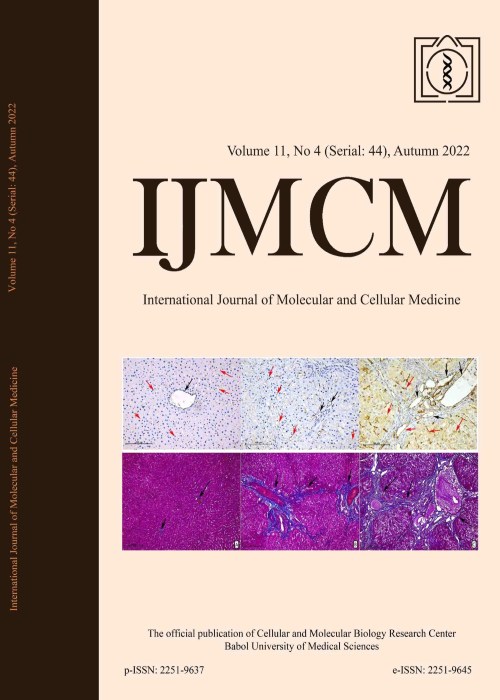Comparison of molecular mutations of G6PD deficiency gene between icteric and nonicteric neonates
Author(s):
Abstract:
Background And Aim
Jaundice is a common disorder in neonates and one of the provable causes of glucose-6-phosphate dehydrogenase (G6PD) deficiency, some mutation types of which may be associated with severe neonatal icter. In this line, the present study has been conducted to compare G6PD mutations in incteric and non icteric neonates. Materials And Methods
This case-control study was implemented in the NICU and Newborn Ward of Amirkola Children Hospital in 2007-2008. Available sampling approach was used and 50 icteric as well as 50 non-icteric newborns, both with G6PD deficiency, were selected as the case and the control group respectively. Two milliliters of peripheral blood were collected in EDTA-containing tubes after parental consent and G6PD deficiency was diagnosed using FST (Fluorescent Spot Test) method. All samples were first evaluated in terms of Mediterranean mutation and the negative cases of this mutation were then examined for Chatham mutation; all remaining samples were finally tested for Cosenza mutation. After the completion of the above steps, G6PD mutations were compared in the two groups and P-value less than 0.05 was considered significant. Results
In icteric group, 76% were male and 24% were female and in non-icteric group, 70% were male and 30% were female. The mean weight of neonates was 3.2 ± 0.4 kg and 2.8 ± 0.8 kg in icteric and non-icteric groups respectively (p<0.05). In non-icteric group, 54% Mediterranean, 18% Chatham, and 28% Cosenza negative were observed and in icteric group, 56% Mediterranean, 32% Chatham, and 12% Cosenza negative were found; the distribution of Mediterranean and Chatham mutations was not significant between the two groups (p>0.05), however, the distribution of rare mutations (Cosenza negative) was significantly different between icteric and non-icteric groups with enzyme deficiency (p<0.05). The mean bilirubin level was not statistically different in Mediterranean (18.5 ± 2.9), Chatham (18.8 ± 2.1) and Cosenza negative (20 ± 4.3) mutations (p> 0.05). Newborns with Chatham mutation have been less in need of exchange transfusions (p <0.05). Conclusions
Findings of the present study showed that there was no significant relationship between prevalent mutations of G6PD gene and the incidence of icter in Mediterranean and Chatham mutations; Mediterranean mutation was the most common mutation in the mentioned gene in icteric and non-icteric neonates in our region, while Cosenza mutation was more frequent in non-icteric group, indicating that rare mutations of G6PD gene may less likely lead to neonatal icter. Furthermore, the need for exchange transfusion is less in icteric neonates with Chatham mutation which is indicative of milder clinical phenotype in this type of mutation.Keywords:
Language:
English
Published:
International Journal of Molecular and Cellular Medicine, Volume:2 Issue: 5, Winter 2013
Pages:
242 to 248
magiran.com/p1116000
دانلود و مطالعه متن این مقاله با یکی از روشهای زیر امکان پذیر است:
اشتراک شخصی
با عضویت و پرداخت آنلاین حق اشتراک یکساله به مبلغ 1,390,000ريال میتوانید 70 عنوان مطلب دانلود کنید!
اشتراک سازمانی
به کتابخانه دانشگاه یا محل کار خود پیشنهاد کنید تا اشتراک سازمانی این پایگاه را برای دسترسی نامحدود همه کاربران به متن مطالب تهیه نمایند!
توجه!
- حق عضویت دریافتی صرف حمایت از نشریات عضو و نگهداری، تکمیل و توسعه مگیران میشود.
- پرداخت حق اشتراک و دانلود مقالات اجازه بازنشر آن در سایر رسانههای چاپی و دیجیتال را به کاربر نمیدهد.
In order to view content subscription is required
Personal subscription
Subscribe magiran.com for 70 € euros via PayPal and download 70 articles during a year.
Organization subscription
Please contact us to subscribe your university or library for unlimited access!


